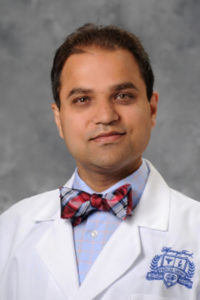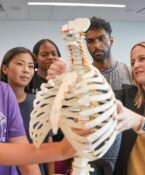Battling the rising rates of suicide

The recent high-profile suicides of fashion designer Kate Spade and celebrity chef Anthony Bourdain have brought wide attention to a serious and growing public health concern in the U.S.
New CDC data reports that suicide rates have increased by 30 percent since 1999, and a UNT Health Science Center alumnus points out that for every suicide that occurs, there are approximately another 25 more attempts being made by individuals across the nation.
“The numbers, and the fact that they continue to rise, are staggering,” said Deepak Prabhakar, MD, MPH, a 2006 graduate of the UNTHSC School of Public Health, who now serves as Director of Psychiatric Educationfor Henry Ford Health Systemand as Presidentof the Michigan Council of Child and Adolescent Psychiatry. “It’s important to also note that in more than half of all suicide cases, the individuals were never diagnosed with a psychiatric disorder and did not receive much needed specialty mental health care.”
Untreated depression, anxiety, hopelessness, trauma, family or financial stresses, job situations and substance abuse can all put a person at risk, he said.
“Do we know all the reasons? No. First, there is a societal stigma about talking with a doctor that often keeps people from sharing these types of feelings,” Dr. Prabhakar said. “Access to care is a factor, as well as the time it can take to get an appointment with a provider. But there could be other underlying issues. If a person is using alcohol or drugs, he or she might not be in the state of mind to even recognize that help is needed and to seek resources.”
Feelings of hopelessness and isolation, he said, are at the top of reasons for considering suicide.
“In this age of social media, online communications and texting,” he said, “isolation can be a major factor. A lot of 1-on-1, personal interaction has been replaced. Just because someone is on social media and has hundreds of friends doesn’t mean they have a person they can talk to freely.”
There is no typical profile for a person who may be at risk of suicide – individuals of all demographics can be vulnerable. In general, more women attempt suicide, while more men die of suicide, and the highest rates now come from among the 45-54 age group, with ages 15-24 also at a rate of very high concern.
With young adults, Dr. Prabhakar said, contagion could be a worry, “due to entirely avoidable sensationalism and glamorization of suicide in popular media that could send a wrong message, and because hearing about others may prompt troubled kids to think suicide could be an option for them.”
“When a well-known celebrity dies, the impact on the community is far-reaching and opens the door to start talking about suicide,” he said. “It’s important to begin the dialogue, to ask if you think you know someone with these types of feelings, and to listen.”
Are there solutions?
“The reasons behind suicide are very complex, and we don’t often know what’s going on behind the scenes in a person’s life,” Dr. Prabhakar said. “However, people shouldn’t be afraid to ask if they think a friend or loved one might be at risk. It can be hard to talk openly about feelings, but there is a chance to help someone by listening without judgment and offering support.”
Adolescents, he said, often drop hints if they are considering suicide, so it’s important to tune in to those signals.
UNTHSC Assistant Professor Karen Bell, PhD, who has studied and consulted on suicide prevention for adolescents and college-age students, concurs with that recommendation.
Dr. Bell, a faculty member in the UNTHSC School of Public Health Department of Health Behavior and Health Systems, said that around 90 percent of students talk to their friends about their problems.
And 80 percent are apt to talk to family members, she said, “making it critically important for social networks to communicate with each other and serve as a gatekeeper to get potentially suicidal people to helping resources that can keep them safe.”
Resources are available through the American and International Foundations for Suicide Prevention, and phone counselors can be reached at anytime by calling the Suicide Prevention Lifeline at 1-800-273-TALK.
New efforts are also being made to screen for suicide risk through primary care providers.
“This is important, not just because many individuals with depression or suicidal thoughts never reach out to a psychologist or psychiatrist, but also because of the huge shortage of mental health professionals in today’s workforce,” Dr. Prabhakar said. “By using clinical interview and screening tools at the primary physician’s office – which can be as simple as asking just a few key questions about how a person is doing or feeling — we can hopefully identify and connect earlier with at-risk individuals. With appropriate help, there is hope and people do get better.”





Social media